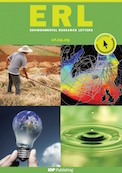
Abstract: Using the net anthropogenic nitrogen input (NANI) approach we estimated the N budget for the Lake Victoria Basin in East Africa. The NANI of the basin ranged from 887 to 3008 kg N km−2 yr−1 (mean: 1827 kg N km−2 yr−1) for the period 1995–2000. The net nitrogen release at basin level is due primarily to livestock and human consumption of feed and foods, contributing between 69% and 85%. Atmospheric oxidized N deposition contributed approximately 14% to the NANI of the Lake Victoria Basin, while either synthetic N fertilizer imports or biological N fixations only contributed less than 6% to the regional NANI. Due to the low N imports of feed and food products (<20 kg N km−2 yr−1), nitrogen release to the watershed must be derived from the mining of soil N stocks. The fraction of riverine N export to Lake Victoria accounted for 16%, which is much lower than for watersheds located in Europe and USA (25%). A significant reduction of the uncertainty of our N budget estimate for Lake Victoria Basin would be possible if better data on livestock systems and riverine N export were available. Our study indicates that at present soil N mining is the main source of nitrogen in the Lake Victoria Basin. Thus, sustainable N management requires increasing agricultural N inputs to guarantee food security and rehabilitation and protection of soils to minimize environmental costs. Moreover, to reduce N pollution of the lake, improving management of human and animal wastes needs to be carefully considered in future.








